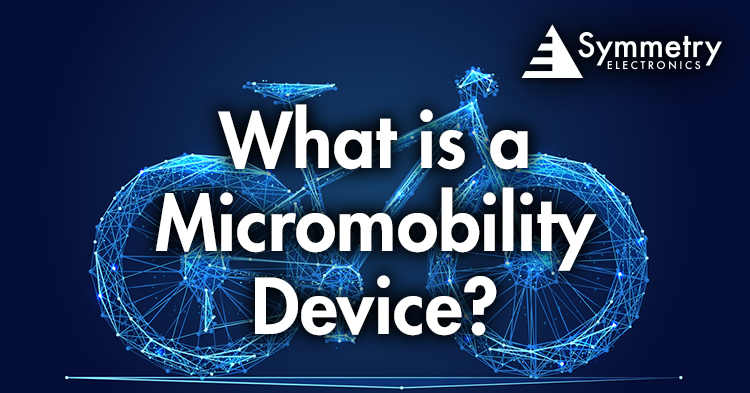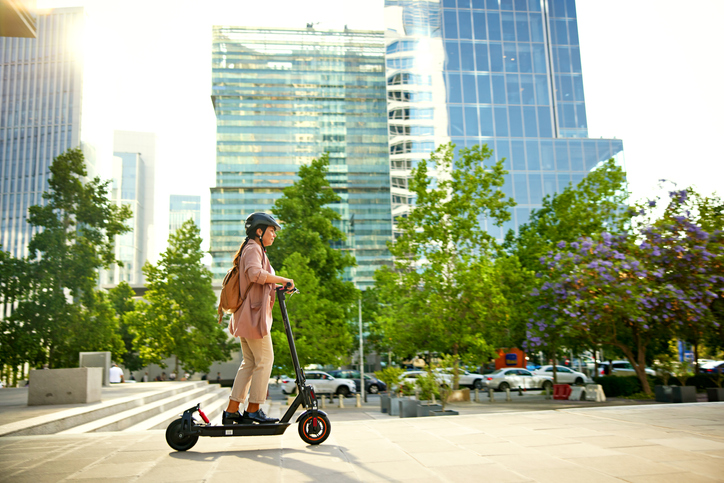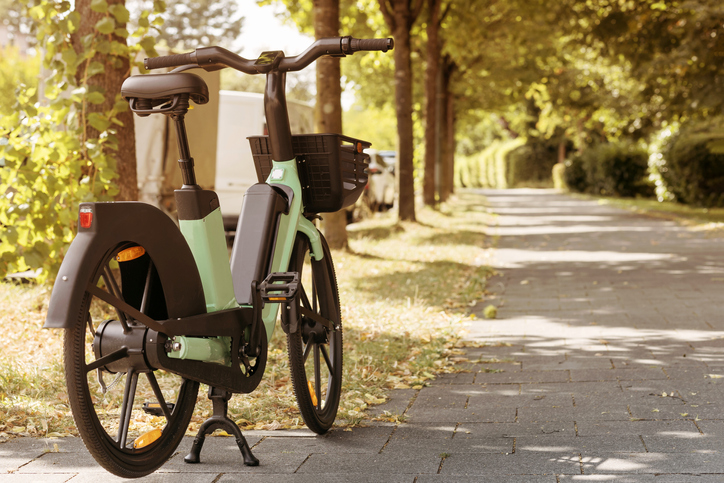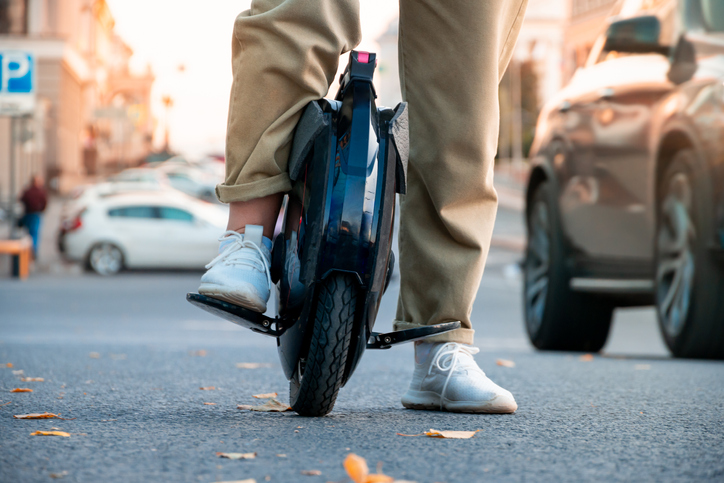- Home
- Symmetry Blog
- What is a Micromobility Device?
What is a Micromobility Device?
About Jari Haiston

In urban environments, the way we move from place to place is changing dramatically. One of the key innovations that has gained popularity in recent years is the concept of micromobility. Allied Market Research® reports that the global micromobility market was valued at $44.2 billion in 2020 and is projected to reach $214.57 billion by 2030. As the demand for these compact and sustainable modes of transportation continues to rise, engineers are at the forefront of creating the technology that powers these devices and addressing the challenges that come with them.
Defining Micromobility Devices
Micromobility devices are a class of compact, lightweight, and often electrically-powered means of transportation designed for short-distance, urban, or suburban commutes. These devices are reshaping the way people travel by offering efficient alternatives to traditional forms of transportation.
The primary characteristic of micromobility devices is their size and agility. Micromobility devices address the last-mile problem in urban areas as they provide a bridge between walking and conventional modes of transport. Last-mile connectivity is the challenge of getting from a transportation hub, such as a bus or train station, to a final destination. Micromobility devices offer a convenient solution for these short journeys.
Types of Micromobility Devices
Micromobility devices are accessible to a wide range of users as they are usually rented or shared through app-based services. They offer a convenient, eco-friendly alternative for short trips and can help reduce traffic congestion, limit carbon emissions, and broaden transportation modalities in urban areas. Micromobility devices encompass a diverse range of transportation options, including:
Electric Scooters
Electric scooters, commonly known as e-scooters, are perhaps the most recognizable micromobility devices. They are compact, electrically powered scooters often available for rent through smartphone apps.
Electric Bicycles (E-bikes)
E-bikes are traditional bicycles equipped with electric motors to assist pedaling. These devices have a broader range than e-scooters and are designed for longer commutes.
Electric Skateboards
Electric skateboards are motorized boards that allow riders to travel at higher speeds without pushing off the ground.
Electric Unicycles
Electric unicycles are single-wheeled, self-balancing devices that offer agility and compactness.
Electric Kick Scooters
Similar to e-scooters, electric kick scooters have a small electric motor to assist in propulsion.
Hoverboards
Hoverboards, also known as self-balancing scooters, are two-wheeled platforms controlled by the rider's weight distribution.
Electric Pedal-Assist Tricycles
These tricycles offer enhanced stability and are equipped with electric pedal-assist systems. Engineers work on design and integration of the electric components, making them accessible to a wide range of users.




Micromobility Opportunities
The integration of micromobility presents a wide range of opportunities, including:
- Battery technology
- Motor systems
- Lightweight designs
- Fleet management solutions
- Predictive maintenance innovations
- Sustainable charging infrastructure
Additionally, software developers have an integral role in creating user-friendly apps for device rental and location tracking, offering substantial opportunities for app development and data analytics. Furthermore, entrepreneurs are exploring new models of mobility-as-a-service (MaaS) platforms, consolidating various transportation options into a single, convenient service, which could potentially revolutionize urban transportation systems. As micromobility devices continue to gain traction, it opens doors for a diverse range of businesses to participate in reshaping urban mobility paradigms while addressing environmental and congestion challenges.
Challenges Facing Micromobility Integration
The integration of micromobility into urban environments presents several challenges that must be addressed for this innovative mode of transportation to reach its full potential. One significant challenge is the need for robust infrastructure, including designated lanes and parking facilities for micromobility devices. According to ABC Eyewitness News, residents of Chicago complain that electric scooters are breaking roadway rules, misusing sidewalks, and leaving scooters in improper places. The lack of such infrastructure can lead to conflicts with pedestrians and traditional vehicles, compromising safety and efficiency.
Enhanced sensor technology is becoming increasingly vital in the realm of micromobility devices. Sensors play a critical role in ensuring safety and functionality. Proximity sensors and collision detection systems can help prevent accidents by alerting riders to potential obstacles. Gyroscopes and accelerometers contribute to the stability and balance of devices like electric skateboards and unicycles, enhancing the user experience. Sensors also gather valuable information for fleet management and route optimization, enabling operators to make informed decisions.
Additionally, issues related to regulatory frameworks, including licensing, insurance, and safety standards, vary widely between regions and can impede the smooth integration of micromobility. Managing the maintenance and distribution of shared micromobility fleets is a logistical challenge that requires effective coordination.
Sustainability concerns, such as the environmental impact of battery disposal and energy sources, also demand attention. Finally, ensuring equitable access to micromobility services, particularly for underserved communities, remains a critical challenge. Addressing these challenges will be essential to harness the benefits of micromobility while mitigating potential drawbacks.
Embracing Symmetry Electronics Solutions in Your Micromobility Device Designs
As a leader in cutting-edge IoT and industrial IoT (IIoT) solutions, we are uniquely positioned to address micromobility design challenges and opportunities that developers face. Our focused and curated line card of electronic component suppliers ensures that developers can select a wide range of innovations that are optimal for enhancing the efficiency, range, and safety of their micromobility designs. Our portfolio of data-driven solutions enable the development of connected, smart micromobility fleets. Moreover, as the world of mobility evolves, we support the demand for electronic components and solutions that drive innovation in the rapidly expanding field of micromobility and help to create safer, more efficient, and environmentally conscious urban transportation systems.
Interested in learning more about solutions to optimize your micromobility device design? Our team of Applications Engineers are experts in wireless, connected, and IoT technologies and are available to assist you with finding the industry’s latest micromobility design solutions. Consultation is free and available throughout your design cycle. Contact Symmetry Electronics today!
